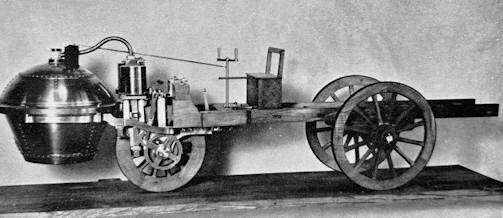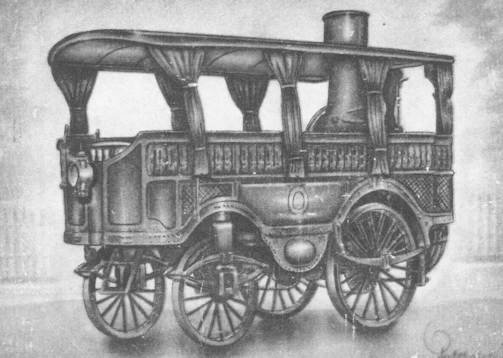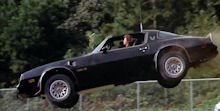The Motor Car Early Beginnings Steam

Although there were probably earlier attempts at designing a self-propelled vehicle, the first successful design of which there is a record, was in 1769. This was a steam cart, designed to haul field artillery, the work of a French army officer, Nicolas Cugnot. It consisted of a three-wheeled cart with a large bowl-shaped boiler at the front, connected to the front
wheel and cylinders by rods.
In 1784, William Murdock built a model steam carriage driven by a beam engine connected by a rod to a cranked axle between the wheels. He did not, however, continue with his experiments but turned his energies towards railway engines. In 1787, a licence for a steam wagon was granted to Oliver Evans, an American living in Pennsylvania. He also produced an amphibious steam powered dredger in 1805. Another steam engineer, Richard Trevithick, built a steam car in 1802, which could carry eight people. It was accidentally
destroyed by fire and owing to lack of money Trevithick was unable to continue with his inventions. This steam coach ran between the City of London and Paddington. Walter Hancock's team of steam coaches ran regularly for several months during 1834 The three-wheeled beam engine built by William Murdock in 1784 was not designed to carry passengers.

The development of the steam vehicle was continued on the Continent of Europe. In France, Amédée Bollée built his first steam car L'Obéissante in 1873. This was coal-fired and carried 12 passengers. The Marquis de Dion and M. Bouton produced a small steam carriage in 1883 with the boiler in front and with front wheel drive.
In 1887, Léon Serpollet introduced a new method of steam propulsion on his single cylinder, coke-fired tricycle. This was the flash boiler system, in which water, passing through the heated flash coil, was vaporised into steam instantaneously. The use of liquid fuel enabled a much lighter type of vehicle to be produced in the nineties and steam cars and wagonettes were being built in France and Germany and firms were already experimenting in the United States.
The first motoring event was organised by a French newspaper Le Petit Journal in 1894, from Paris to Rouen. Open to "propellers of all kinds and carriages of all shapes", it was won by a De Dion steam drag.



